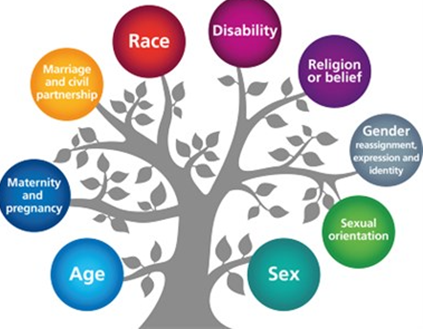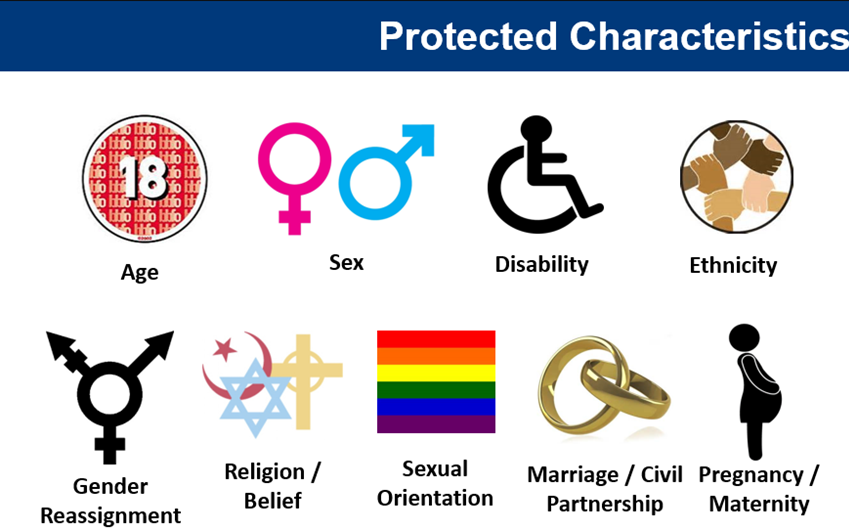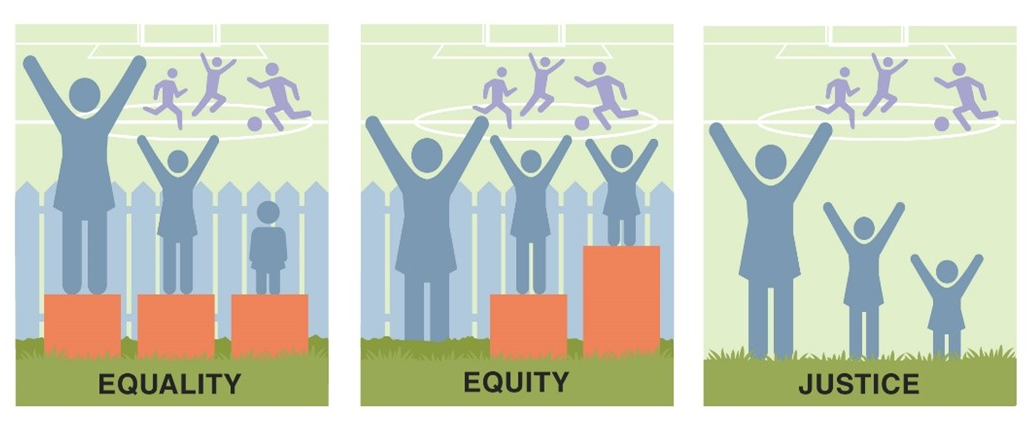Equality, Diversity & Inclusion
Imagining the journey in another's footsteps; nurturing understanding, respecting all. Everyone knowing that they are treasured and loved as a unique child of God
What is EDI?
EDI stands for equality, diversity and inclusion. As is shown through our values, HTPD believes that all identities should be valued and celebrated by our school community. An awareness of EDI further helps us to notice and address any instances of prejudice or bias and to make sure we are an actively anti-prejudiced school.
What do we want to achieve?
-
At HTPD our EDI group is working hard to make sure that our school embodies an anti-prejudiced culture, so that all children are given the very best chance to succeed and thrive at school.
-
 All school staff are aware of the 9 protected characteristics, and actively participate in an anti-prejudiced school culture.
All school staff are aware of the 9 protected characteristics, and actively participate in an anti-prejudiced school culture. -
All children are taught to understand that our school celebrates all identities and that they should feel empowered to notice and address injustice in their lives.
 In the Equality Act 2010, nine characteristics were identified as 'protected characteristics'. These are the characteristics where evidence shows there is still significant discrimination in employment, provision of goods and services and access to services such as education and health.
In the Equality Act 2010, nine characteristics were identified as 'protected characteristics'. These are the characteristics where evidence shows there is still significant discrimination in employment, provision of goods and services and access to services such as education and health.
Talking to your child about racism
We want to ensure that our school community is a place where everyone feels seen, represented and listened to. We want all of our staff to robustly challenge racial inequality to ensure that our pupils contribute to making the world a more equal and fairer place for all. Through modelling awareness, inspiring a sense of curiosity, a conscious effort will be made to amplify and celebrate the achievements of non-dominant cultures and individuals to nurture affirming attitudes and behaviour for the benefit of all. We All Belong!
The way children understand the world evolves as they grow, but it’s never too early or too late to talk to them about equality and racism. Please follow the link below for information about age-appropriate ways to start a conversation and explain that racism is always wrong.
|
Talking to your kids about racism While there is no one-size-fits-all approach, the earlier parents start the conversation the better. |
If you would like to talk to anyone in school about this further, contact:
emilyr@htpd.surrey.sch.uk (PSHE subject leader)
What is anti-prejudice?
-
Recognising that we all have some biases and prejudices, and actively addressing them when they arise.
-
Understanding that simply not being prejudiced will not change anything. Action is needed to undo existing prejudice. For example, to challenge racism, we need to be actively anti-racist.
-
Actively challenging any biases – social or structural – toward members of our community based upon any protected characteristic.
What are the different types of bias?
-
Explicit bias: consciously making a judgement based on identity. For example, presuming that a boy wouldn’t enjoy a sewing lesson.
-
Unconscious / implicit bias: acting on prejudice without realising it. For example, making an assumption about a child based on their name before meeting them.
-
Social bias: prejudice sustained by individuals or groups of people.
-
Structural bias: prejudice sustained by processes / practices. For example, much of the media our children consume features white, able-bodied people. This does not provide our children of colour or disabled children with many role models and allows them to feel different to, and less than, their better represented peers.
Some examples of anti-prejudice. We do all of this already!
-
Reading books featuring characters with a range of identities and characteristics.
-
Celebrating a range of cultural days as a class – especially if a child in your class is celebrating at home.
-
Including different identities in Thoughtful and RSE discussions.
-
Being mindful of language used with children (e.g. you’re so kind / gentle / neat vs. you’re so brave / confident / tough).
-
Intervening if children use stereotyping language with each other (e.g. X isn’t being bossy, she’s being a good leader).
Glossary of useful terms:
Intersectionality:
The idea that people experience more than one type of discrimination. Discrimination is often thought of in distinct groups (e.g. racism, sexism, homophobia). Doing so does not acknowledge that these groups overlap. For example, a white homosexual man might experience homophobia. A white homosexual woman might experience homophobia and sexism. A black homosexual woman might experience homophobia, sexism and racism.
Microaggressions:
Small, often-repeated comments/actions which subtly demonstrate prejudice. For example, commenting negatively on a person’s hair; presuming that someone else will tidy up after you; asking where someone is ‘really from’.
Person of Colour:
A collective term for non-white people. People of colour is not a perfect term as it implies that there is one collective ‘non-white’ identity and experience. This is not the case. Whenever possible, specific language should be used (e.g. if you mean black, say black). Coloured is an out-dated term which has been used in the past as a negative term.
Prejudice:
A judgement or opinion based on assumption or misinformation. Prejudices are learned and can be unlearned.
Privilege:
Explicit or implicit freedoms available to members of dominant/powerful social groups. These freedoms are often invisible to those who have them.
Privilege does not mean that your life is easy, but rather that your life has not been made harder by your identity.
Unconscious Bias:
Holding prejudiced beliefs without noticing. A vital part of anti-prejudice is recognising unconscious biases – be it our own, those of our peers or the children – and actively challenging them when they arise.


